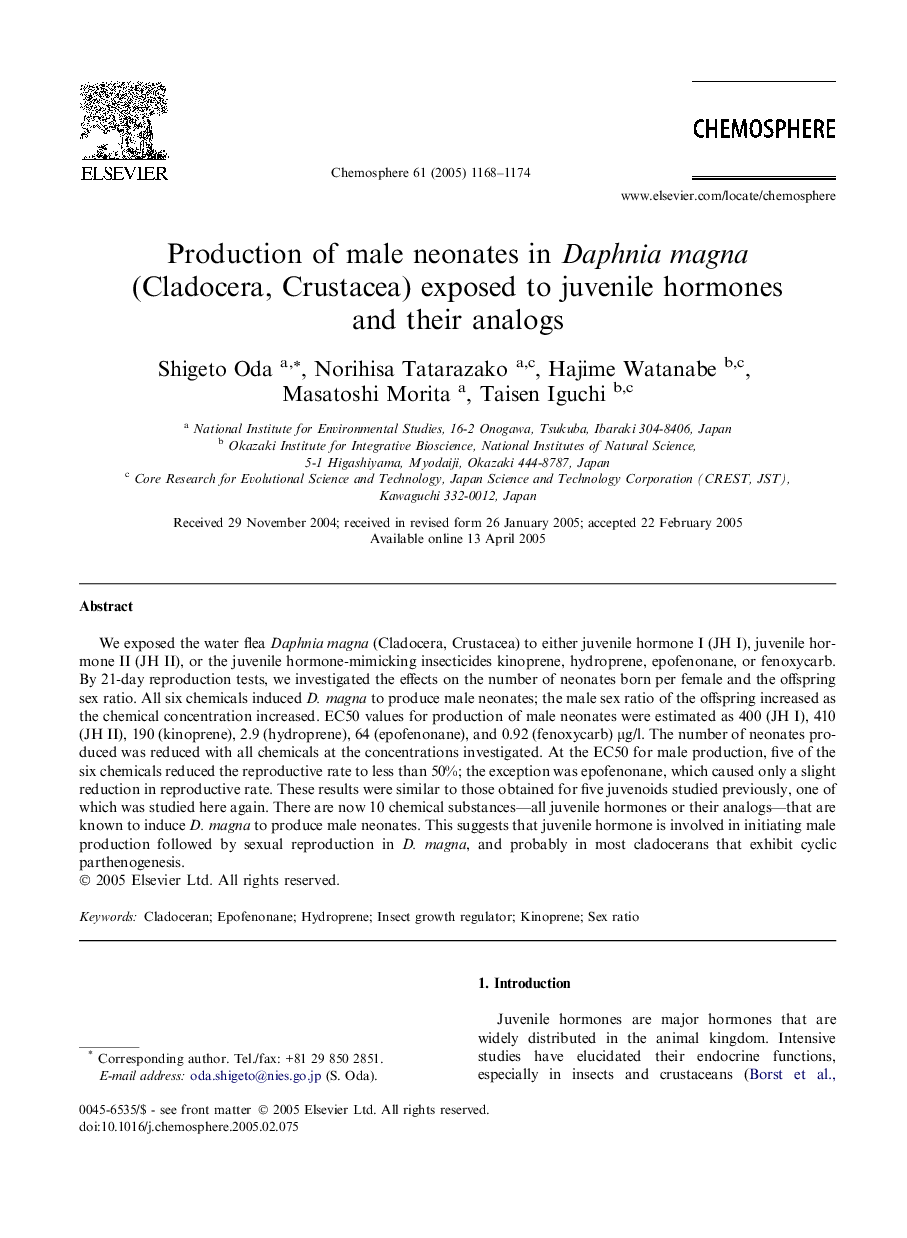| کد مقاله | کد نشریه | سال انتشار | مقاله انگلیسی | نسخه تمام متن |
|---|---|---|---|---|
| 9451401 | 1307817 | 2005 | 7 صفحه PDF | دانلود رایگان |
عنوان انگلیسی مقاله ISI
Production of male neonates in Daphnia magna (Cladocera, Crustacea) exposed to juvenile hormones and their analogs
دانلود مقاله + سفارش ترجمه
دانلود مقاله ISI انگلیسی
رایگان برای ایرانیان
کلمات کلیدی
موضوعات مرتبط
علوم زیستی و بیوفناوری
علوم محیط زیست
شیمی زیست محیطی
پیش نمایش صفحه اول مقاله

چکیده انگلیسی
We exposed the water flea Daphnia magna (Cladocera, Crustacea) to either juvenile hormone I (JH I), juvenile hormone II (JH II), or the juvenile hormone-mimicking insecticides kinoprene, hydroprene, epofenonane, or fenoxycarb. By 21-day reproduction tests, we investigated the effects on the number of neonates born per female and the offspring sex ratio. All six chemicals induced D. magna to produce male neonates; the male sex ratio of the offspring increased as the chemical concentration increased. EC50 values for production of male neonates were estimated as 400 (JH I), 410 (JH II), 190 (kinoprene), 2.9 (hydroprene), 64 (epofenonane), and 0.92 (fenoxycarb) μg/l. The number of neonates produced was reduced with all chemicals at the concentrations investigated. At the EC50 for male production, five of the six chemicals reduced the reproductive rate to less than 50%; the exception was epofenonane, which caused only a slight reduction in reproductive rate. These results were similar to those obtained for five juvenoids studied previously, one of which was studied here again. There are now 10 chemical substances-all juvenile hormones or their analogs-that are known to induce D. magna to produce male neonates. This suggests that juvenile hormone is involved in initiating male production followed by sexual reproduction in D. magna, and probably in most cladocerans that exhibit cyclic parthenogenesis.
ناشر
Database: Elsevier - ScienceDirect (ساینس دایرکت)
Journal: Chemosphere - Volume 61, Issue 8, December 2005, Pages 1168-1174
Journal: Chemosphere - Volume 61, Issue 8, December 2005, Pages 1168-1174
نویسندگان
Shigeto Oda, Norihisa Tatarazako, Hajime Watanabe, Masatoshi Morita, Taisen Iguchi,